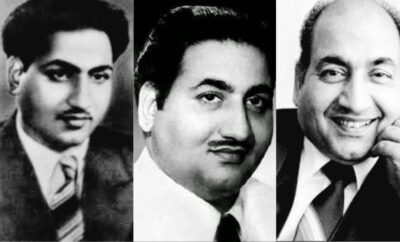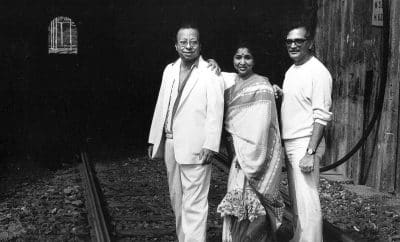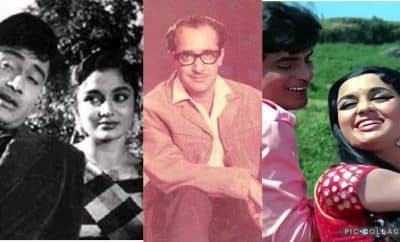Collections
On the Strings of Santoor
Hindustani classical music is a vast subject and can’t be discussed without mentioning the ancient instruments. I remember reading an article in the newspaper a couple of years ago, a college under the university of Hyderabad, had studied and researched the effects of instruments on people. Through this they proved that santoor and sarod had a very positive effect on children having learning deficiency. They showed progress in their writing pattern and it helped them retain what they had studied. Isn’t that great? Another reason why I love music. Sitar, sarod, sarangi, tabla, pakhavaj, veena, tanpura, bansuri, shehnai, santoor. All these instruments add to the charm of music.
Santoor, the moment you mention or hear this instrument, you actually get the feel of a soft drizzle of water on your body and mind. It gives you the effect of that ‘sawan ki thandi phuhaar’ after a month long of scorching heat. Has the effect anything to do with its place of origin!? Might be ? It comes from the paradise land of Jammu and Kashmir!! Many say that santoor has a Persian origin. But some recent studies say that it was India and it was called as Shata Tantri Veena in Sanskrit. In ancient India, Veena was referred to all types of stringed instruments. And Shata Tantri Veena was a modified version of Pinaki Veena (Harp). We also have a modified version of santoor, which is called the swarmandal. If you observe all the three instruments have a soothing effect on one’s mind and body.
Santoor is used extensively in Sufi genre of music too. Radio Kashmir plays quite a lot of Sufi instrumentals which have just santoor and nothing else. The Sufiana music in various Ragas are announced as Maqam-e-Kalyan, Maqam-e-Saba, Maqam-e-Nawah etc. One of the famous exponents in this field is Ustad Mohammed Abdullah Tibetbaqal. He’s also a great vocalist along with being a santoor player.
https://www.youtube.com/watch?v=m6BbtcVZ3BA
Santoor also reminds us of Pandit Shiv Kumar Sharma. A person who looks as serene as santoor. His name has become synonymous with santoor. His son Rahul Sharma has taken the legacy forward and made a name for himself in this field. Apart from these 2, there are a few noteworthy exponents of santoor. Bhajan Sopori, Abhay Sopori, Satish Vyas, Tarun Bhattacharya and Ulhas Bapat. But it was Pandit Shiv Kumar Sharma who was instrumental in bringing santoor to Hindi film music. V. Shantaram once heard Shiv ji playing this instrument and introduced him to music director Vasant Desai. Thus santoor was used for the first time in Hindi films in Jhanak Jhanak Payal Baje (1955) and all the santoor pieces in the film were played by Shiv ji, who was just 17 years old then. In fact, there is a scene in the film where Sandhya, Gopi Krishna, Bhagwan Dada and Manorama are boating and bickering. The santoor music in that entire 2 minutes sequence has been given by Shiv ji himself, at the request of Vasant Desai.
It was no looking back for Santoor after that. Today we have so many songs having santoor not only as an accompaniment but as an enhancer of that particular song.
Let us take a dive into few such songs –
1. Mere mehboob tujhe – Mere Mehboob (1963) –
2. Jaaiye aap kahan – Mere Sanam (1965)
3. Chhoo lene do naazuk hothon ko – Kaajal (1965)
https://www.youtube.com/watch?v=7DhSTc3njg4
4. Nainon mein badra chhaye – Mera Saaya (1966) –
5. Kajare badarwa – Pati Patni (1966) –
6. Itna hai tumse pyar – Suraj (1966) –
7. Kisi raah mein – Mere Humsafar (1970) –
8. Jeevan ki bagiya mehekegi – Tere Mere Sapne (1971) –
9. Patta patta boota boota – Ek Nazar (1972) –
10. Ye dil aur unki – Prem Parbat (1973) –
11. Ae dil-e-nadan – Razia Sultan (1983) –
https://www.youtube.com/watch?v=M5jfD1S1-LM




dinesh ghate
September 1, 2020 at 5:06 pm
Great Initiative in Instrumental Subject Deepa Jee, Congratulations and sure listen this songs as I heard today only and came to know that was composed by Rafi Sahab with Santoor & Tabla Only
https://www.youtube.com/watch?v=e4Ruv7Ne8D8
Ajay Poundarik
September 1, 2020 at 7:53 pm
http://laxmikantpyarelal.com/2019/11/13/santoor-laxmikant-pyarelal/